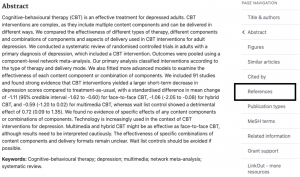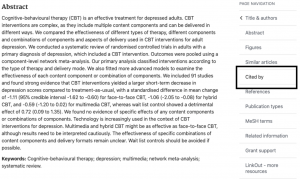Module 2: Formulating a Research Question and Searching for Sources
Using Citations to Find More Sources
Besides your standard search there are additional options to identify relevant sources including searching key journals in your field, and tracking the work of relevant authors.
Another method used by researchers is to consult the citations within an article. By consulting the citations you can find relevant titles that you might have missed in your search. The advantage of this method is that you can find sources about a subject quickly and relatively easily. The disadvantage of this method is that you are searching backward, or retrospectively, so each source you find will be older than the previous one.
This is why you need to use a forward citation searching method in combination with your backward citation search. In the forward searching method, researchers use tools within databases like Google Scholar and Web of Science to see who has recently cited your source. This way you can find new and relevant sources.
Method 1: Backward Searching
In this method, review the references used in key articles. For example, search through the article for the “References” section as in Figure 2.9 below.

Method 2: Forward Searching
In this method, see what articles have cited your key articles. For example, search through the “Cited by” section of the article as in Figure 2.10 below.

Many databases will include live links to an article’s references, as well as live links to other articles that have cited that article. The following video demonstrates how to do citation searching in Google Scholar:
CSUDH Library. Citation Tracking. Licenced under Creative Commons CC BY 4.0.

